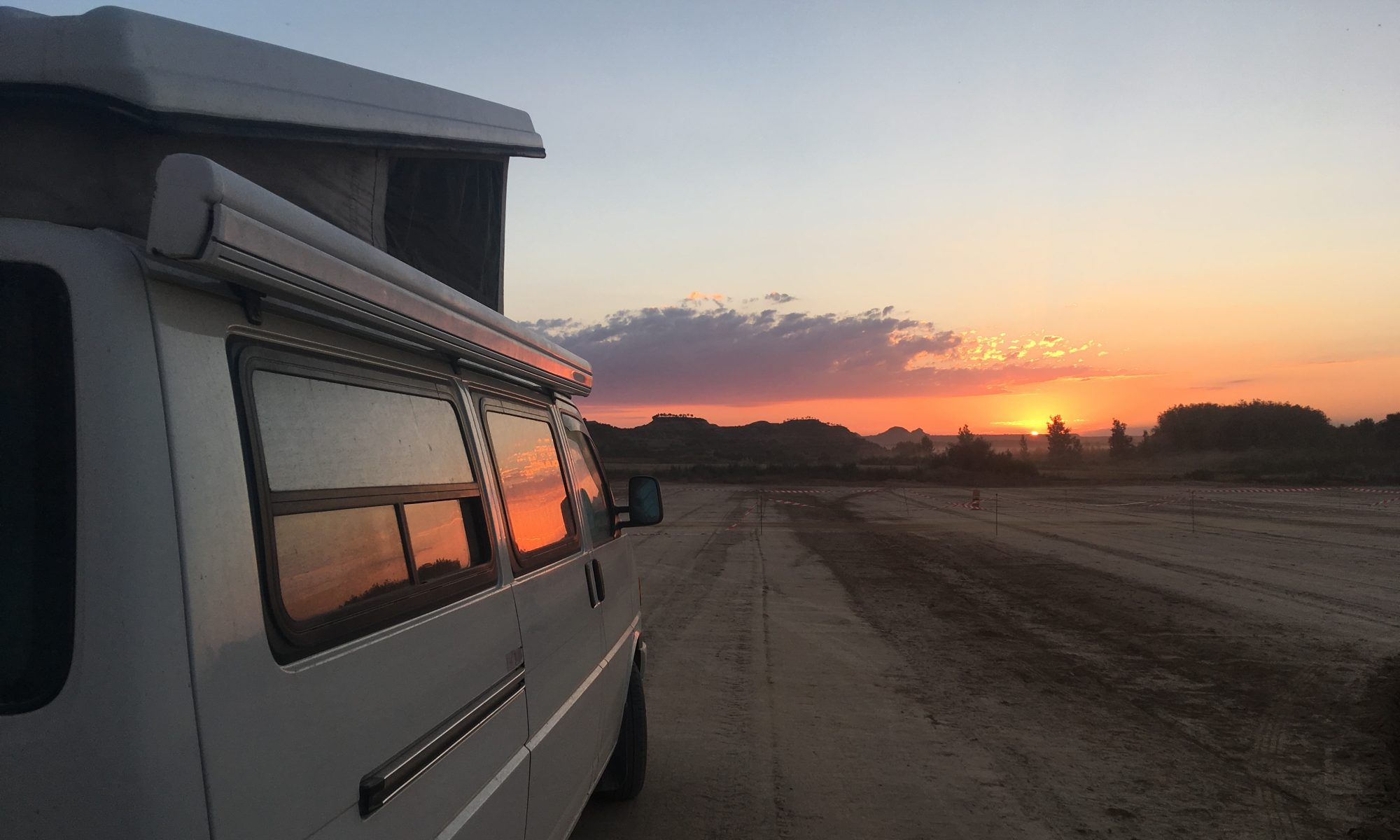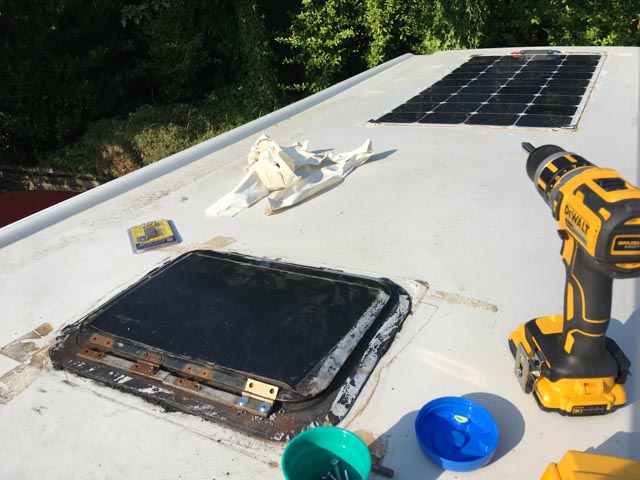So onto phase two and almost complete redesign of the charging, storage and generation system.
As with a lot of this build, cash flow dictated a step by step upgrade and even after all this time, some of my planning wasn’t very forward thinking. . . .
Step one was to get more visibility on what the solar panels were doing. I knew it wasn’t enough but I needed to know more. I went with the Victron Energy 75/15 Smart solar MPPT controller. This gives historic monitoring and Bluetooth display of generation, voltages etc. On phones and Macs (not PCs weirdly). They have a fully configurable charge profile (for lead acid/Lithium) which worked with future upgrades.
Next up was the solar panels. I wanted more, the question was how to fit more on the roof. I found that Lensun sell semi-flexible 50W panels that are roughly the same length as the width of the central section on the roof. This allows me to easily go to 200w and I connected the panels in a series/parallel config (48V system). Parallel panels are meant to be more resistant to shading, series gives you an earlier start to charging, combination hopes to surf the middle ground!
There were other reasons I went with the Lensun. Having previously had a cheap ebay panel, I wanted a higher quality panel but still wanted to stay with the semi-flexible panels. The semi-flexible panels are notorious for not being the most reliable but they are lightweight and low profile. Lightweight means less issues with the roof struts (think they would need upgrading for extra weight). The lensun claim a better construction and do have aluminium backing. They have a golf ball type surface which they claim helps keep them clean, which for the dusty environments the van sees is important to me. The junction box also appears much more robust. The cheap ebay panels have a junction box with a thin profile and I was always concerned that wind and vibration may be one of the faliure modes for these panels. The lensun panels have a much wider flatter box.
Without any doubt the traditional glass panels are more robust but the cost of additional height and weight.
I went the messy above, clean below install route. I have seen lots of beautiful roof install pics where the solar cables go straight through the roof and are dressed inside. I wanted to keep a single roof penetration and keep wiring inside the van invisible, so it’s not invisible on the roof!
In retrospect, I would have installed them all lower allowing for me to fit 300w by covering my broken roof vent (as an option, still looking at ways to get that working again).
I have seen others fit 300w on these vans but only by fitting the panels over the gutters rather than between them. The gutters and roof hatch otherwise limit you.
Next step was storage. The flooded lead acid 110AH battery was massively struggling to give out anything like its 1320Wh plate figure. A guess would put its real capacity more like 500Wh.
I read more and more into the Lithium batteries and although the cost is high £1000, the promise of a true 1kWh+ storage in the same space with less weight was alluring. The other factors are the reduction in round trip energy. In lead acid charging the last % is wasteful, so lots of the solar energy is lost. With lithium it more or less all goes back so your overall solar energy requirement drops. I found a bloke selling off 130Ah lithium Reion batteries from a failed EV project for £300 so I bit his hand off.
So at this stage I had updated the solar, solar charger, battery. Next was dealing with the charging and monitoring. I had done one winter trip with the lithium and relied on just turning alternator charging on and off with guess work as to charge times. Far from ideal. At this point we are in the world of trying to integrate a third party Lithium battery into a Victron Energy system. The solar charger worked fine but one has to find a way to make a BMS for the Reion.
I went the option of using the Victron Lithium split charge relay Cyrix-Li-ct and installed their BMV-712 battery monitor to use as a BMS. This has a relay output. Initial idea was to set this to cut the alternator charging when the capacity reached 95% (using the solar to do the remainder). Unfortunately you can set the relay to work on low state of charge but not high. Instead the relay is set so that it disconnects if the battery hits its float voltage and if that happens, it won’t start charging again unless the voltage drops considerably (level can be set)
So far I pretty much manage to run on solar alone for most of the year, I have a switch to disconnect the split charge that is generally turned off apart from winter months. I have generated nearly 700wh/day in summer, can struggle to hit 100 in winter. The fridge is circa 2-300wh.
And that for now is that! Some wiring modifications were included as well but I will cover that separately



